A Guide to Visiting the The Lost Gardens of Heligan, Cornwall
In this blog post you’ll explore the Lost Gardens of Heligan, one of the UK’s most visited gardens. You’ll discover the Estate and explore its hidden gems, before you walk around the different sections of the Pleasure and Productive Gardens.
In addition, you’ll hopefully find answers to some common questions about the gardens including all of our personal tips to make the most of your visit.
If you’d like to see more of The Lost Gardens of Heligan then make sure to watch our YouTube video by clicking here. You can also watch our full Cornwall Series by clicking here.
Disclosure: This post may contain affiliate links, which means we may receive a small commission if you click a link and purchase something. Clicking these links won’t cost you anything, but it will help us to keep this site up and running! Learn more about our affiliate policy.
10 Interesting Facts about Cornwall
Although Cornwall is located pretty far away from the major centres in the UK, millions of tourists visit it every year. So, I thought I’d share 10 interesting facts about Cornwall and show you why we totally fell in love with it in only 3 days.
- Cornwall has only one neighbouring county, Devon, and is surrounded by water on three sides.
- It has only one city, Truro, which is the administrative centre of Cornwall and also one of the smallest cities in the UK.
- Cornwall has its own flag and own language called Kernewek, which is a Celtic language. The Cornish flag is the flag of the Cornish patron saint, Saint Piran.
- It’s southwesternmost point is called Land’s End and the southernmost point is Lizard Point. Lizard Point is also the most southerly point on mainland Great Britain.
- The well-known Cornish Pasty was invented by the miners. Apparently, at least 120 million pasties are made every year and producers generate millions of pounds worth of trade to the Cornish economy.
- Due to its oceanic setting and the influence of the Gulf Stream, Cornwall has probably the best climate in the UK.
- Cornwall has a huge variety of marine life so you can spot seals, dolphins and even Basking Sharks. How cool?
- There are nearly 400 types of plants in Cornwall, thanks to its warm climate and the Eden Project.
- Cornwall’s 422 miles of coastline has over 300 beaches, many of which are known as surfing paradises like Newquay.
- Other unique things in Cornwall are the Pipewell in Liskeard that’s never run dry, a coach that’s driven by headless horses in Penryn around Christmas, and all the Arthurian legends.
There are definitely many more fun facts about Cornwall, so make sure to have a quick internet search before your visit.
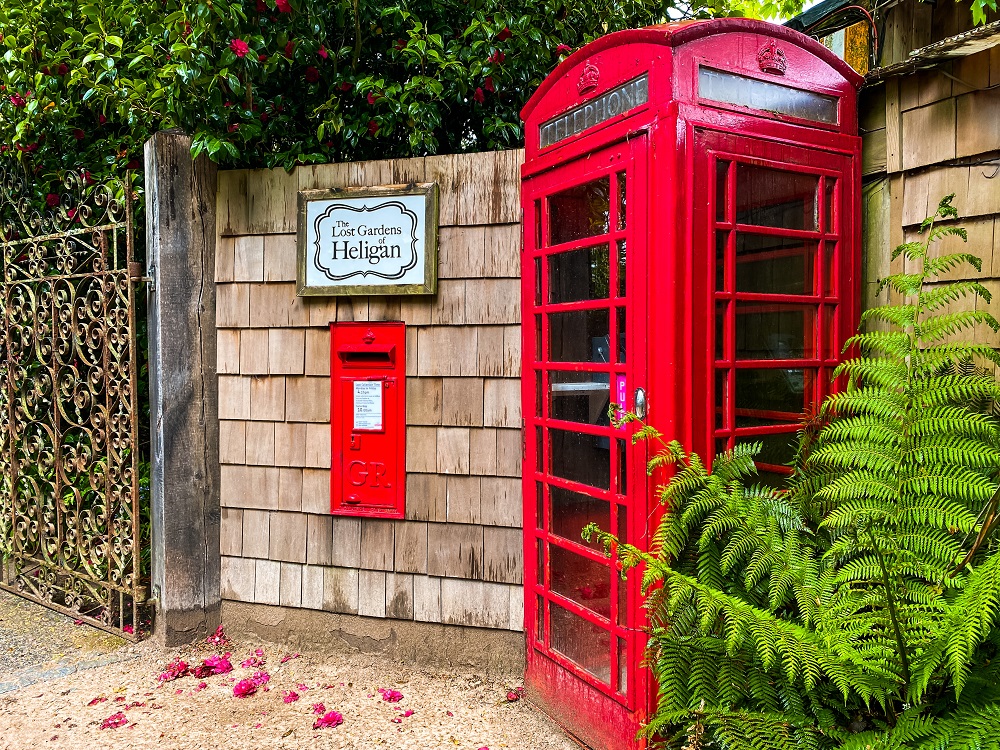
All you need to know about The Lost Gardens of Heligan
The Heligan Estate was bought by the Tremayne family in the 16th century. The family began creating the gardens from the mid-18th century. During this time the estate was a thriving self-sufficient community.
The garden required many talented staff using their expert knowledge to tend to it daily. During World War I, at least 13 of the gardeners had to serve and unfortunately 9 of them lost their lives. Without its talented staff the owner decided to leave and the gardens became lost.
The house itself was rented before being converted into flats in 1970 then being sold off.
It wasn’t until 1990 that a descendant of the Tremayne family introduced what was left of the estate to Tim Smit. Being an archeologist, he took interest in the history of the gardens and started the journey to uncovering them.
During the excavation, the gardeners’ toilet building (Thunderbox Room) was found with the names of the gardeners written on the wall dating back to 1914. From that moment the restoration of the gardens was considered a tribute to these talented gardeners. Later, some of the names were also found on the local war memorial. In 2013, the discovered building was registered as a ‘Living Memorial to the Gardeners of Heligan House’.
The restoration works were also part of a six-episode Channel 4 television series in 1996. Today, The Lost Gardens of Heligan are considered one of the UK’s most popular gardens.
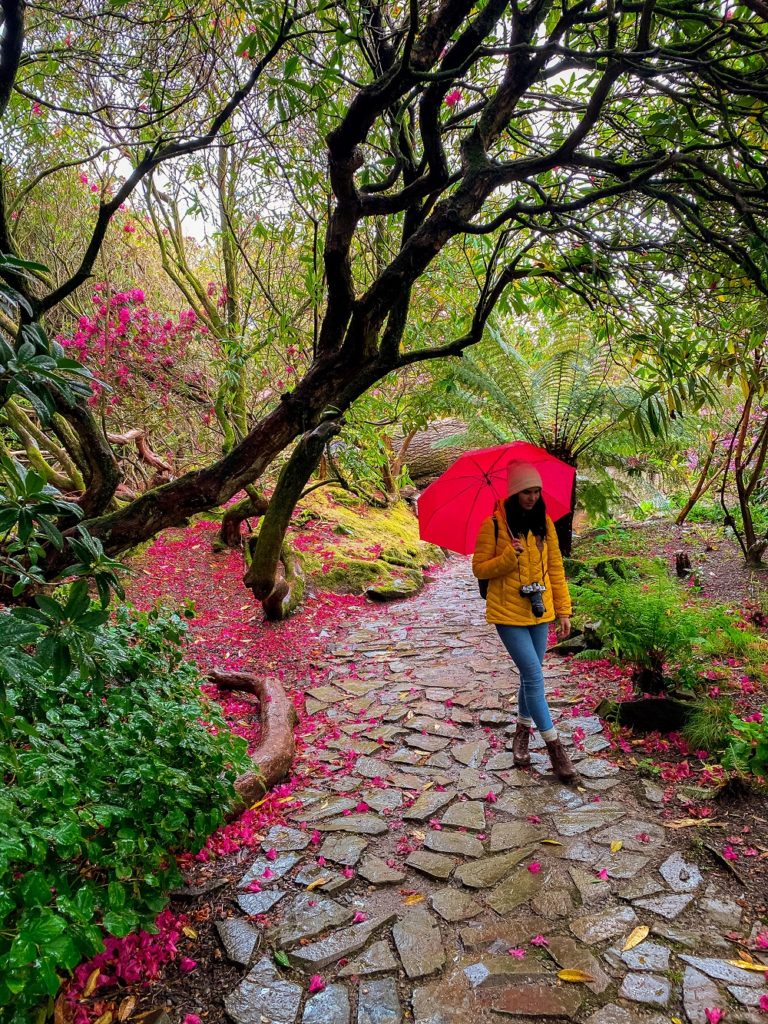
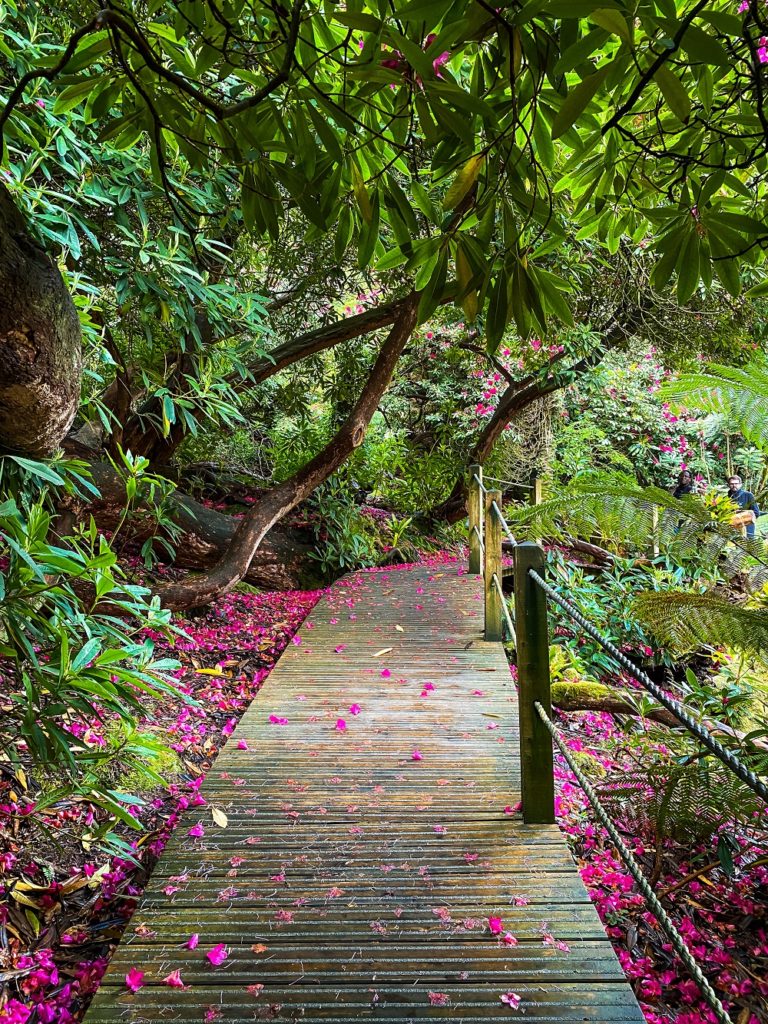
How to get to The Lost Gardens of Heligan
By Car: The Lost Gardens of Heligan are located approximately 11km (7 miles) to the southwest of St Austell and 21km (13.5 miles) to the east of Truro. If you arrive by car, you can park at the gardens’ designated car park. You can use postcode PL26 6EN in your SatNav, but be aware that it sometimes takes you on some very narrow roads.
To avoid this, it is advised to travel to St Austell first then follow the signs to the gardens along the B3273.
If you don’t have your own car but would like to enjoy the freedom of a private vehicle, then you can always hire a car to get to The Lost Gardens of Heligan.
By Public Transport: If you arrive by public transport, there is a bus stop located inside the garden’s car park. From there you can take Buses 23 or 24 travelling to destinations such as Fowey and St Austell.
If you’re coming from further afield, I recommend getting the train to St Austell. There are train services to and from London, Penzance, Exeter and Plymouth. Make sure to plan your journey with Trainline which also provides information on bus fares. From there just take Bus 23 or 24 to The Lost Gardens of Heligan. Please note that the bus ride takes just over 45 minutes.
Top Tip – If you’re planning on travelling across the UK by train a lot, then check out some Railcard options which allow you to save some pennies on your train fares.
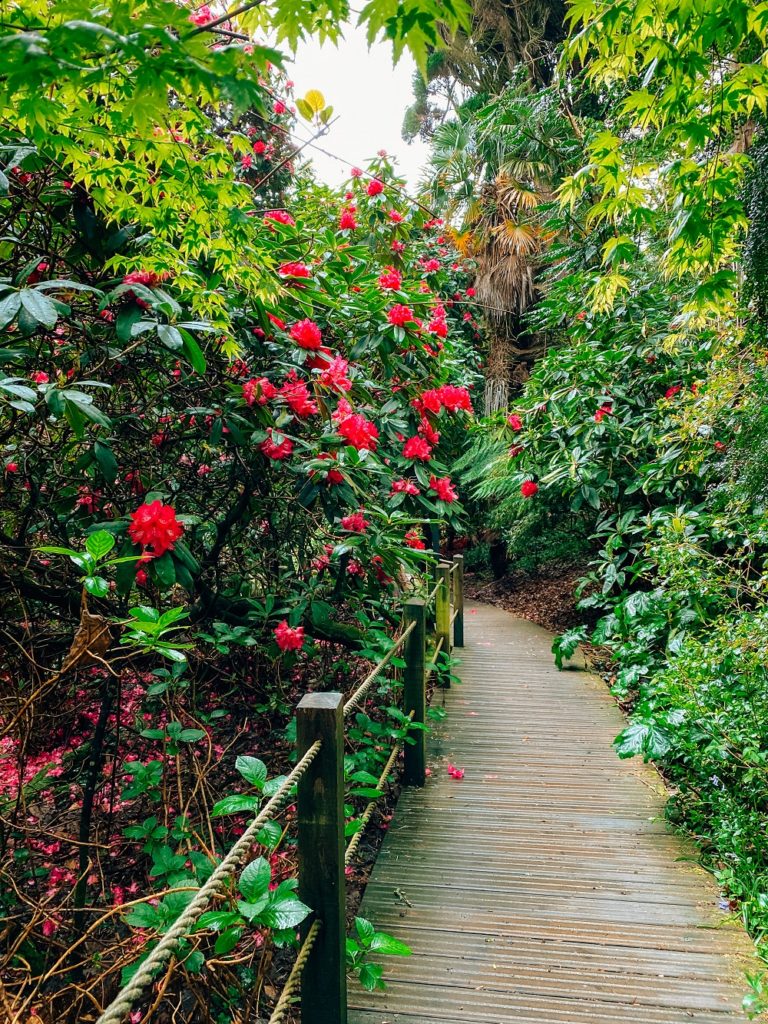
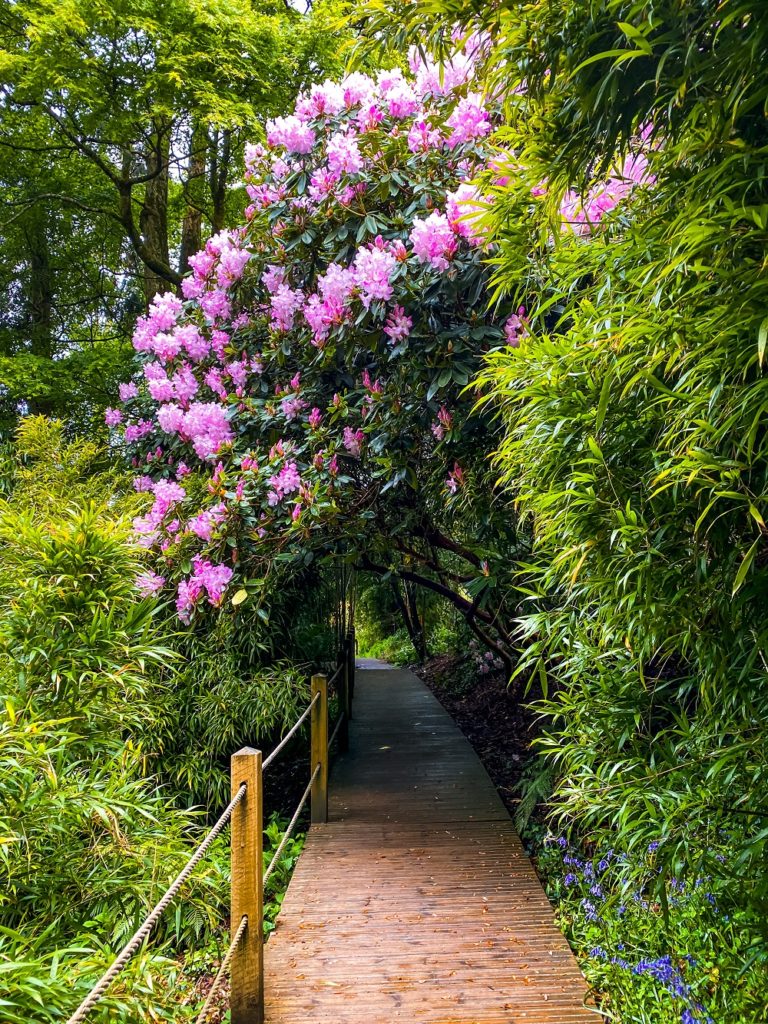
Cost to enter The Lost Gardens of Heligan
Admission fee is £18.50 for adults and £8.50 for children. Please note that on their website, between 17th July and 5th September the adult entry fee is £19.50. There are also some discount options which you can find further information for on the website.
If you live in the area, you can become a member and visit the gardens for free for a year. You can read about the membership by clicking here.
Good to know! – If you decide to become a member on the day of your visit, you can get your ticket refunded.
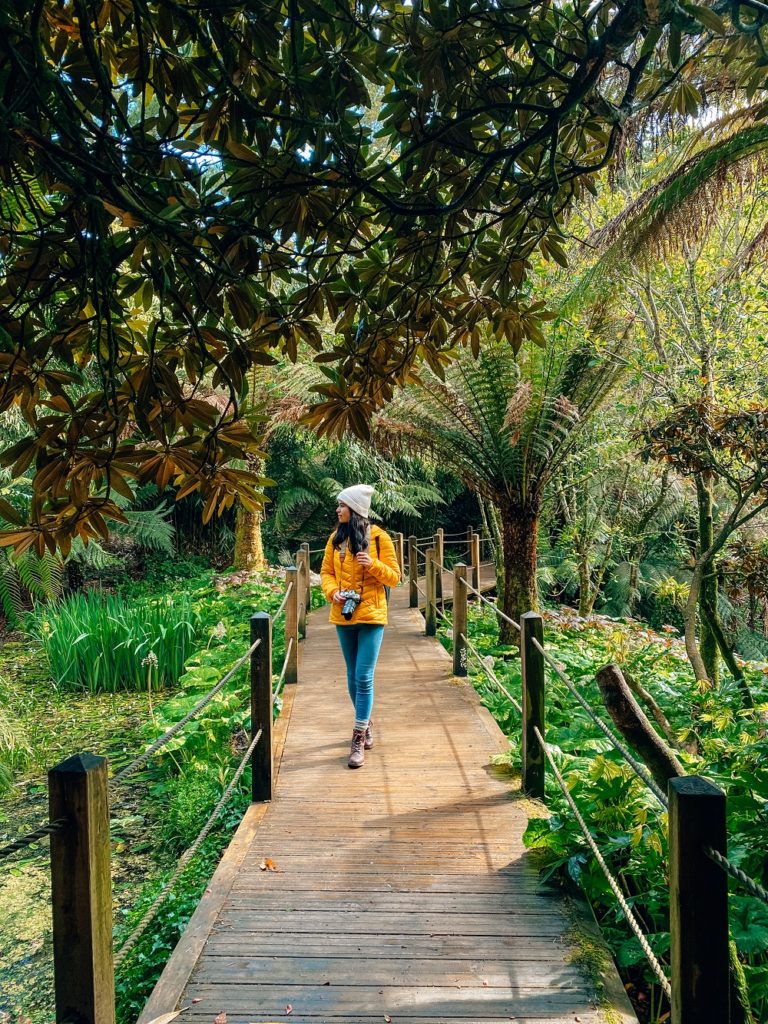
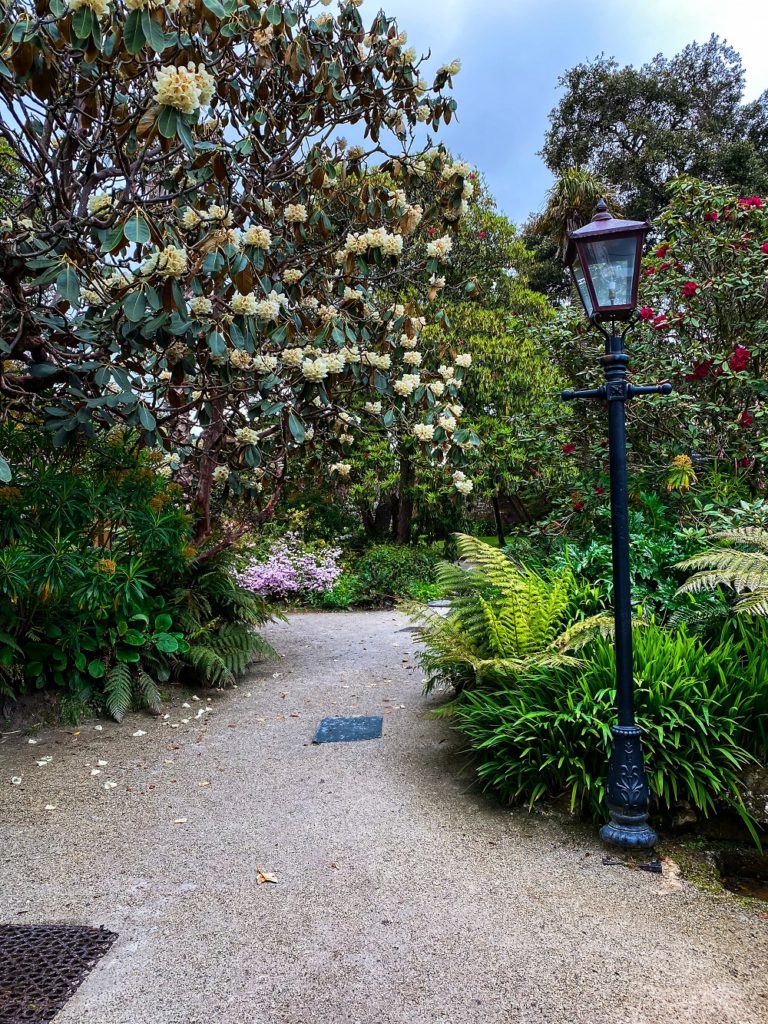
Is The Lost Gardens of Heligan worth the entry fee?
For me personally, the entry fee wasn’t the cheapest. However, after exploring the gardens, I think it’s worth paying if you come in the right season. We visited the gardens in mid-May which meant that the garden was very colourful with its seasonal flowers.
The bluebells were still out, covering many areas of the garden. Other flowers such as rhododendrons and camellias added a pop of pink to the greenery. Although many of the petals had fallen onto the ground already, I think this just made the garden even more beautiful.
I can’t speak from personal experience, however I believe that the garden would look beautiful during autumn too.
I noted on the website that the entry fee is more expensive between July and September. Therefore, if you would like to pay a bit less, I recommend planning your visit outside the summer months. Also, if you don’t like crowds, I recommend visiting outside of school holidays. However, if you’re coming with your family, there will always be some cool seasonal activities for kids to enjoy.
Whilst timing your visit for a sunny day is definitely a good idea, it is also a great activity on a rainy day. At the time of our visit, the forecast wasn’t perfect and we had some pretty heavy downpours during the day. However, I think the rain just made the colours pop even more so definitely consider a visit on a slightly gloomy and rainy day.
How long do you need to explore The Lost Gardens of Heligan?
I would allow at least 4 hours to explore the gardens. If you’d like to make the most of your visit I recommend visiting the areas you’re interested in. There will be site maps around the garden guiding you around. You can also have a look at the map prior to your visit by clicking here.
Further down, I detail most of the areas within the garden with photos so you can have a good idea what to expect on your visit.
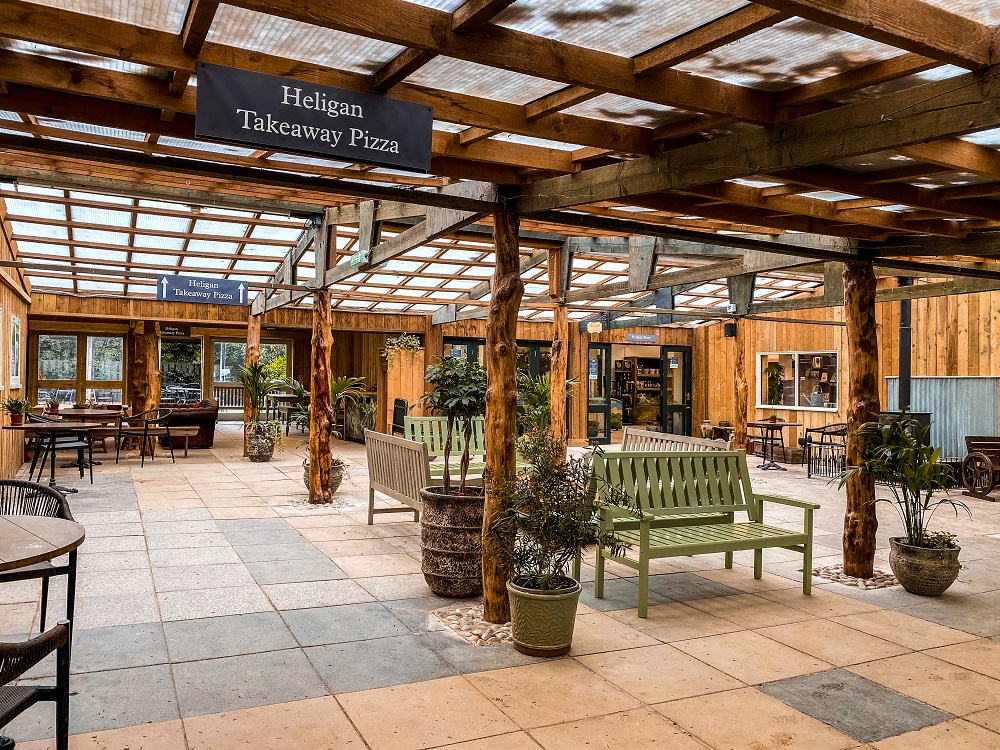
Facilities around The Lost Gardens of Heligan
Cafés and Picnic Spots – If you’d like to grab a drink or something to eat then you’ll have a great selection to choose from at Heligan Kitchen & Bakery. It is located close to the entrance of the gardens so you can either eat something before or after you’ve explored the area. In case you get hungry in the gardens you can head to Stewards’ House Café to grab something to eat there.
On a lovely sunny day, I recommend bringing your own picnic with you. You can bring your own picnic blanket and find a great spot to eat anywhere on the grass or find a bench with a table around the café.
Toilets – There are toilet facilities available next to the car park just before you enter the gardens. There are also public toilets at the Stewards’ House Café within the gardens.
What to wear and bring with you?
What to wear depends on the time of year you’re visiting and the weather conditions on the day of your visit.
I think you can wear basically anything you feel comfortable in. However, one thing I highly recommend is choosing comfortable footwear. You’ll be walking a lot and the path can be uneven and hilly in some places, so you don’t want to be wearing high-heels!
Although there are two cafés in the garden, I suggest you bring some water with you to stay hydrated. Whilst you’ll be covered for the most part, I still suggest bringing sun-cream on a sunny day and an umbrella or rain jacket on a rainy one.
Please Note! – Whatever you bring with you, make sure you either take it home with you or dispose of it responsibly. I suggest bringing a garbage bag with you to collect all your waste then dispose of it when you have the chance. Enjoy your time in the garden but Leave No Trace!

11 features not to miss when visiting The Lost Gardens of Heligan
The Lost Gardens of Heligan consists of the Estate and the Gardens. It was developed in a typical 19th century Gardenesque style. This means that this 200 acres of gardens are split into different areas that are designed differently.
On the Estate you can explore the woodland, the Jungle, the Home Farm and spot wildlife. Within the gardens you can walk around the Productive Gardens and the Pleasure Gardens. Below I give you further details about each section with some photos.
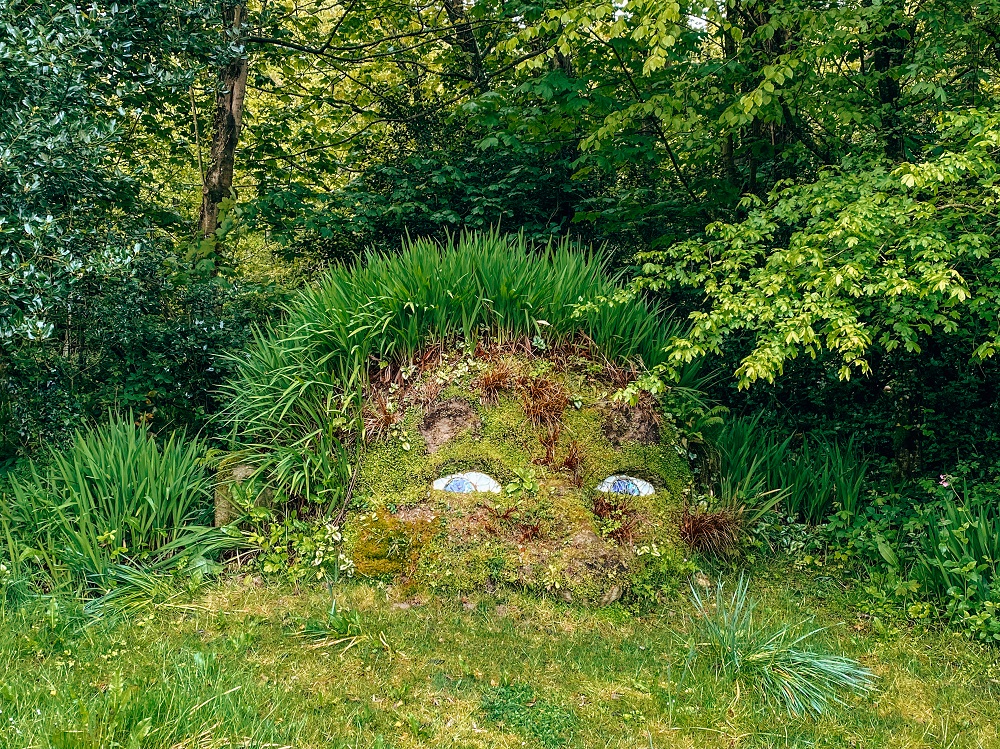
1. The Estate Woodland Walk
You can start exploring The Lost Gardens of Heligan via the Woodland Walk. Along the trail you’ll find some iconic sculptures such as The Giant’s Head, the Mud Maid and the Grey Lady.
All three sculptures were created by Sue Hill and Pete Hill, two Cornish artists, in 1998 and in 2007. The Giant’s Head was inspired by the massive tree root that was left after the Great Storm in 1990. The inspiration for the Grey Lady comes from a mysterious grey figure who reportedly disappeared from the house through the woodland.
Top Tip – Make sure to look out for the Grey Lady, because we nearly walked past it!
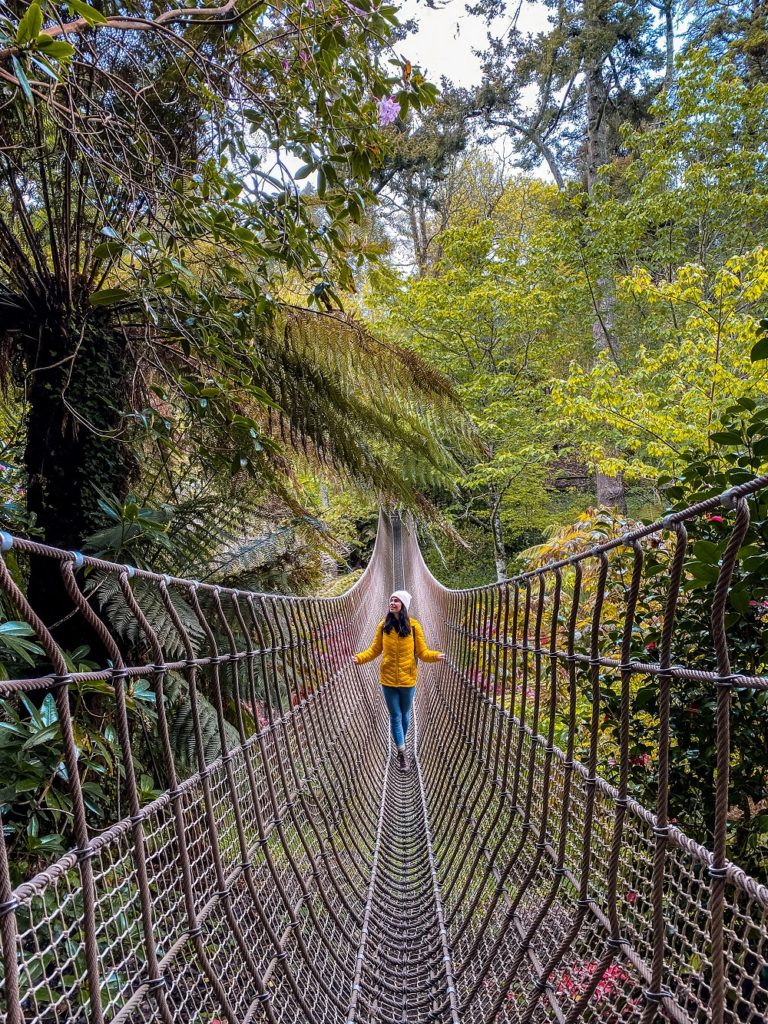
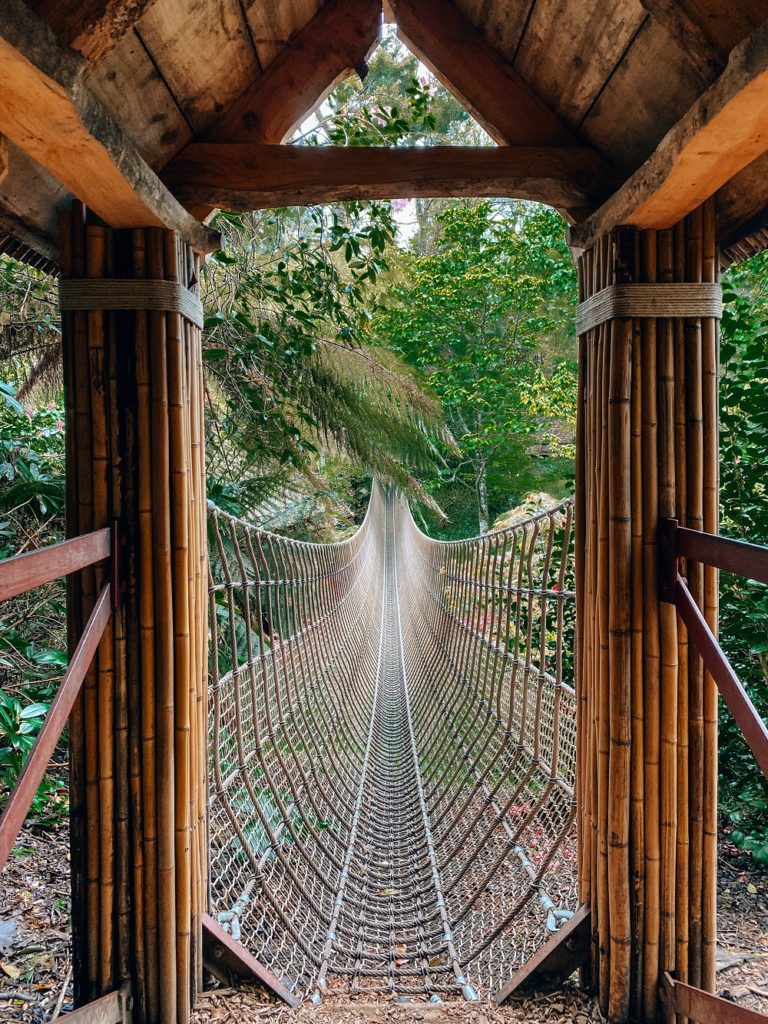
2. The Jungle
I must admit I was most excited about visiting the Jungle when we booked our tickets. Being the UK’s only outdoor jungle, this part is a must see when visiting The Lost Gardens of Heligan.
The Woodland Walk will lead you to the Jungle. The Jungle is located in a valley and the microclimate here is about 5 degrees warmer than the Pleasure Gardens to the north. You’ll be walking along a raised boardwalk which circles around 4 ponds, banana plantations, palms and a giant rhubarb. Towards the end there will also be a bamboo section. Most of these plants were collected from around the world, so this section will make you feel like you’re abroad.
The coolest part of the Jungle is the Burmese Rope Bridge. It spans 30m (100 feet) above the bottom of the valley and connects the two sides. Apparently it’s also the longest Burmese Rope Bridge in the UK so make sure to cross it if you don’t have a fear of heights.

3. The Lost Valley
After exploring the Jungle, I recommend discovering the Lost Valley. It’s located slightly to the northeast of the Jungle. At the time of our visit the valley floor was covered in bluebells which is another great reason for a spring visit. This area has a pond, ancient trees, a charcoal sculpture and charcoal kilns.
This part of the estate was surprisingly quiet. Therefore, it’s perfect if you’d like to take a peaceful stroll, listening to birds and enjoying the woodland.
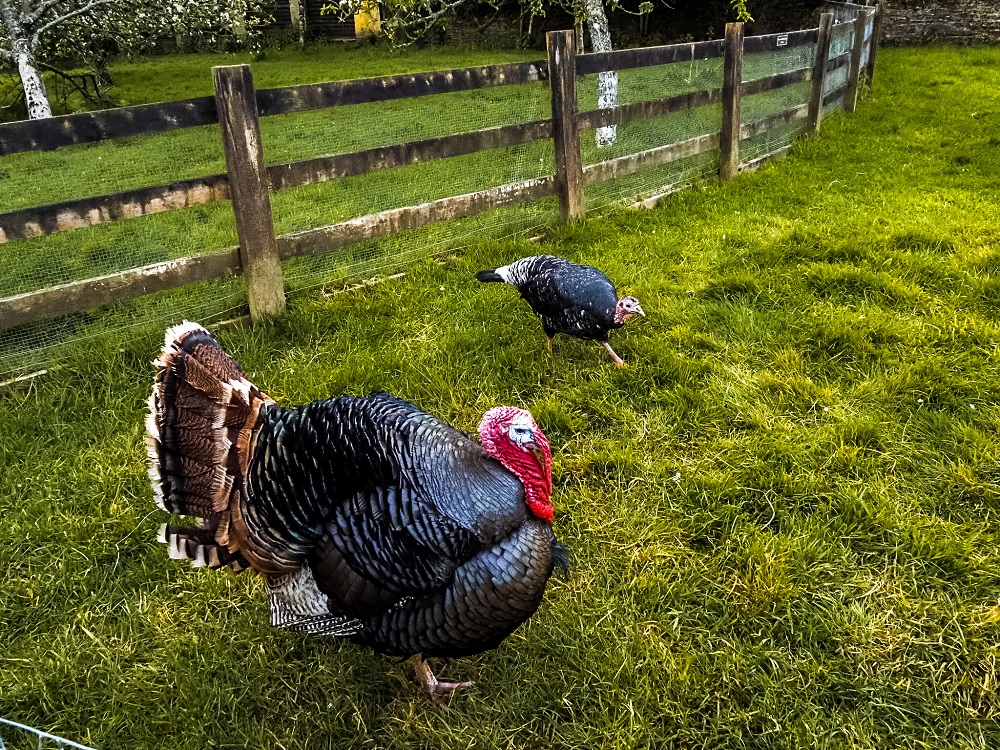
4. The Estate’ Home Farm Animals
The Home Farm has a great variety of traditional and rare breed livestock and poultry. For this reason, the Rare Breeds Survival Trust granted the Rare Breed Farm Park Status to the gardens.
To maintain traditions, the farm uses sustainable and long-established farming techniques. If you’re lucky, you can spot rare breed pigs, cattle, sheep, turkey, chickens, ducks, goats and horses. I think this part of the Estate is perfect if you’re an animal lover or visiting with kids. I must admit, although I grew up in a small village with animals, I don’t know much about different breeds. To me all the animals on the farm just looked adorable.
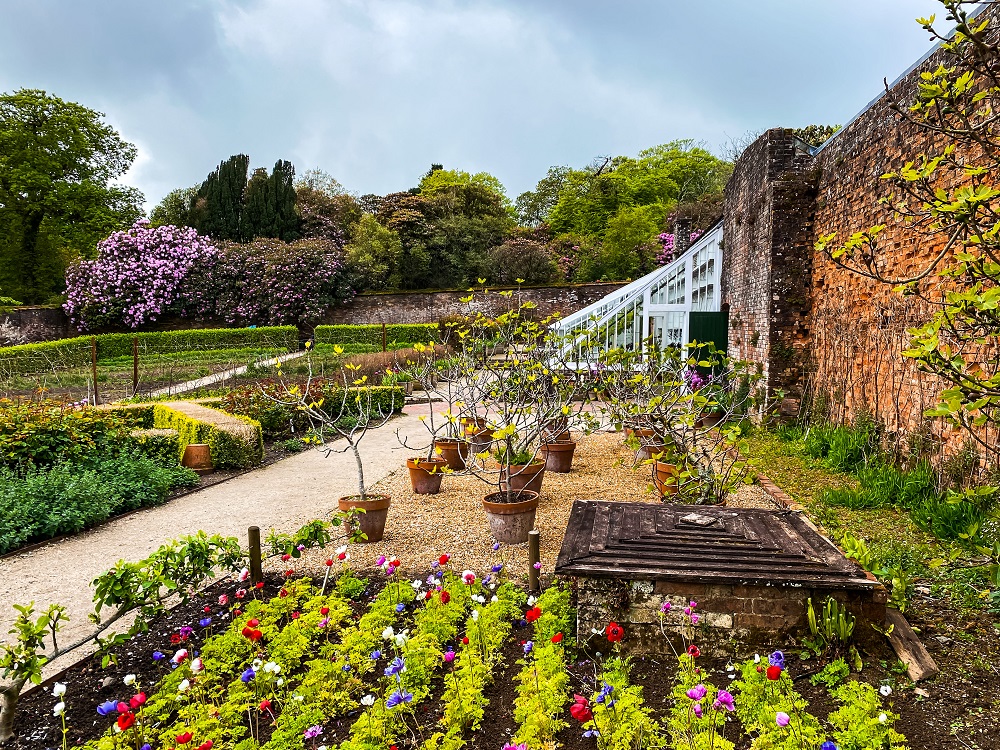
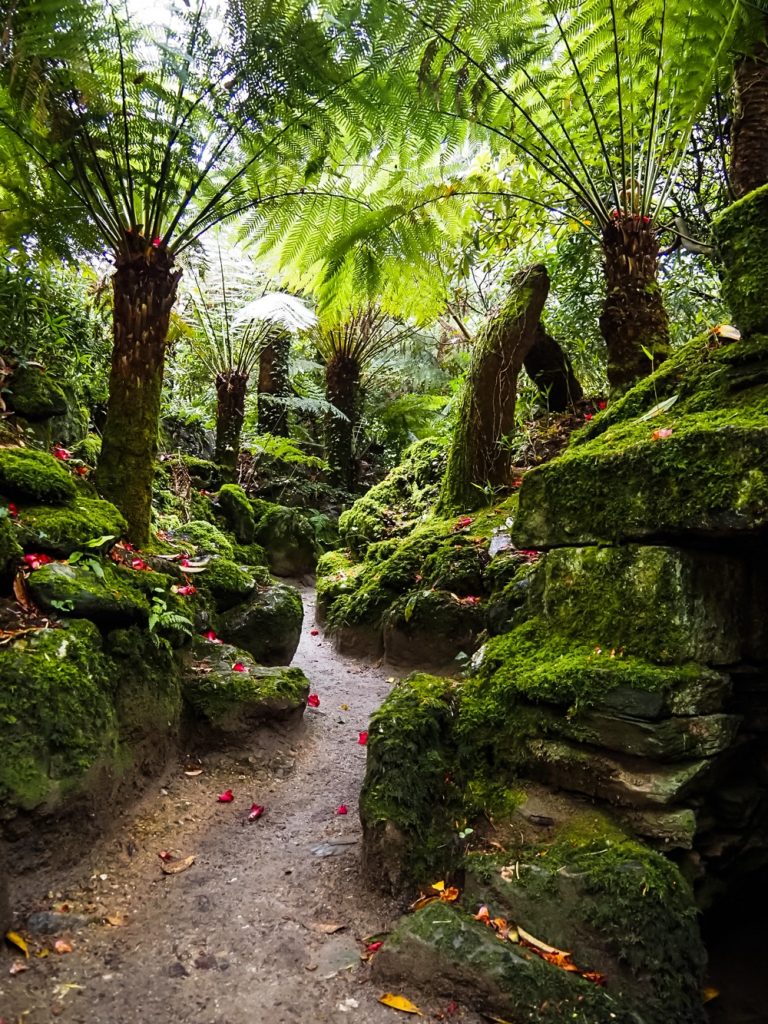
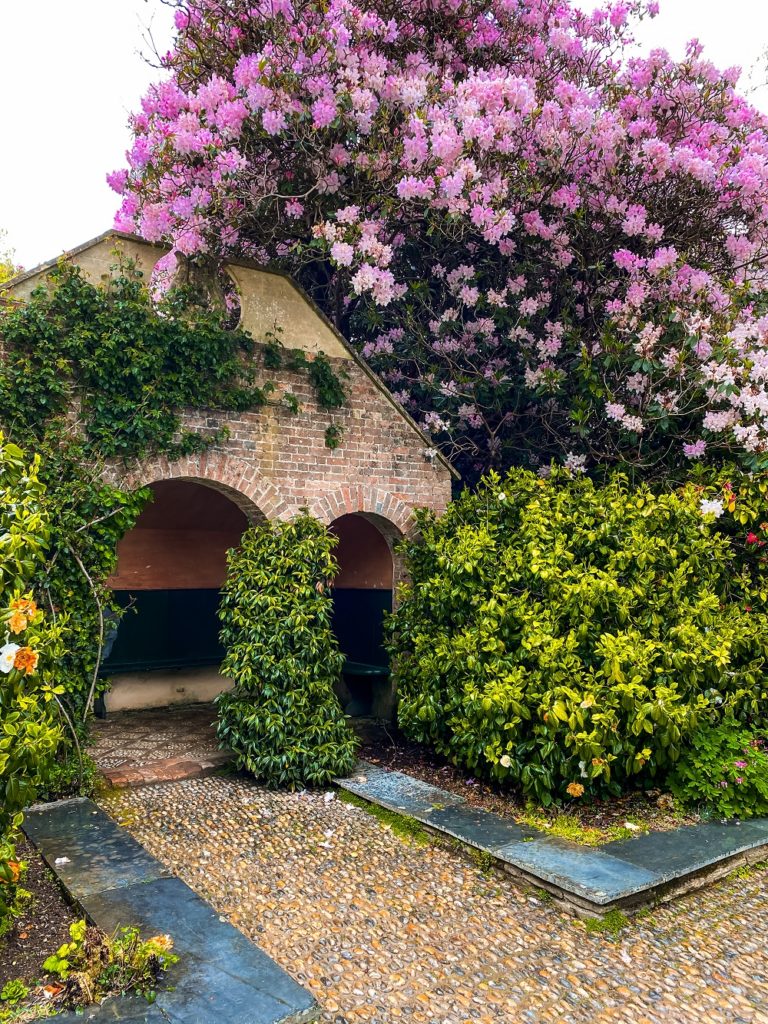
5. Pleasure Gardens: The Grotto
After passing the Home Farm you enter the northern section of the gardens. Here you can explore the Pleasure Gardens and the Productive Gardens.
We first explored The Grotto which is an artificial but decorative simulation of natural caves. The rocks are covered with thick moss here and the temperature is much cooler here than in other areas.
6. Productive Gardens: Walled Flower Garden
Located to the left of The Grotto is the Walled Flower Garden. Within the garden you can find a Citrus House, a Vinery and even a Peach House.
Surrounding the Walled Flower Garden are other features to see such as the Pencalenick Greenhouse filled with flowering geranium plants, the Sundial Garden, Sikkim, and a Wishing Well.
7. Pleasure Gardens: The Northern Summerhouse
Further north from the Grotto is the Northern Summerhouse. It’s an easterly facing garden dating back to 1770.
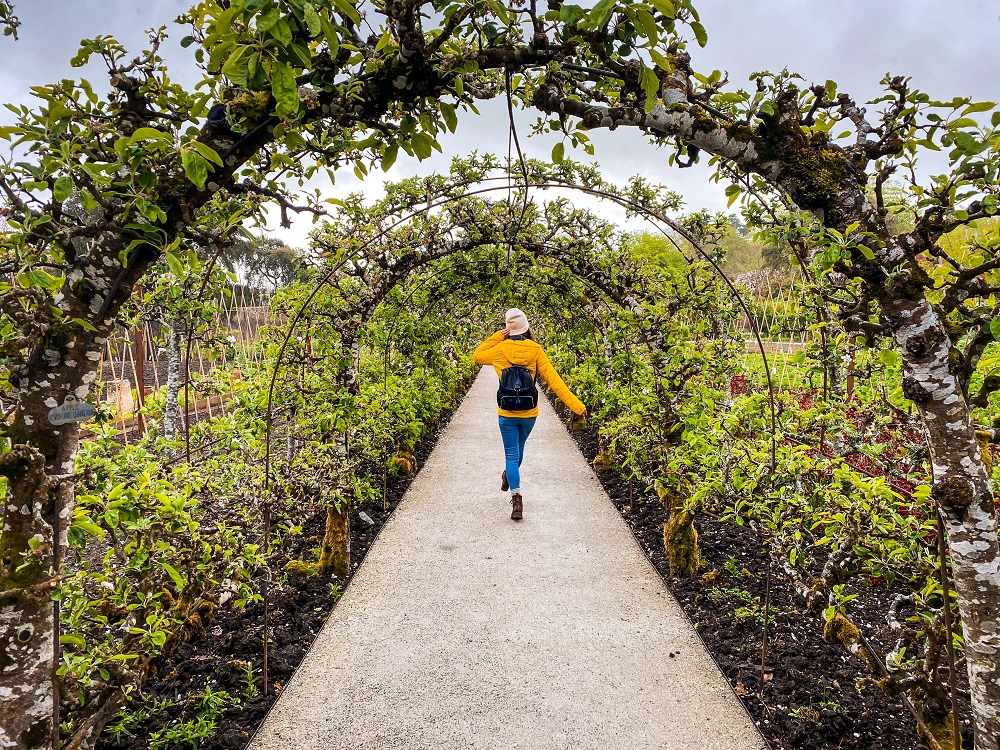
8. Productive Gardens: Kitchen Garden
Just opposite the Flower Garden is the Kitchen Garden. This area is part of the Productive Gardens.
The Kitchen Garden used to cater for the Tremayne family’s needs. Today, you can sample and enjoy the locally grown fruit, vegetables, salad and herbs in your meal at the Heligan Kitchen.
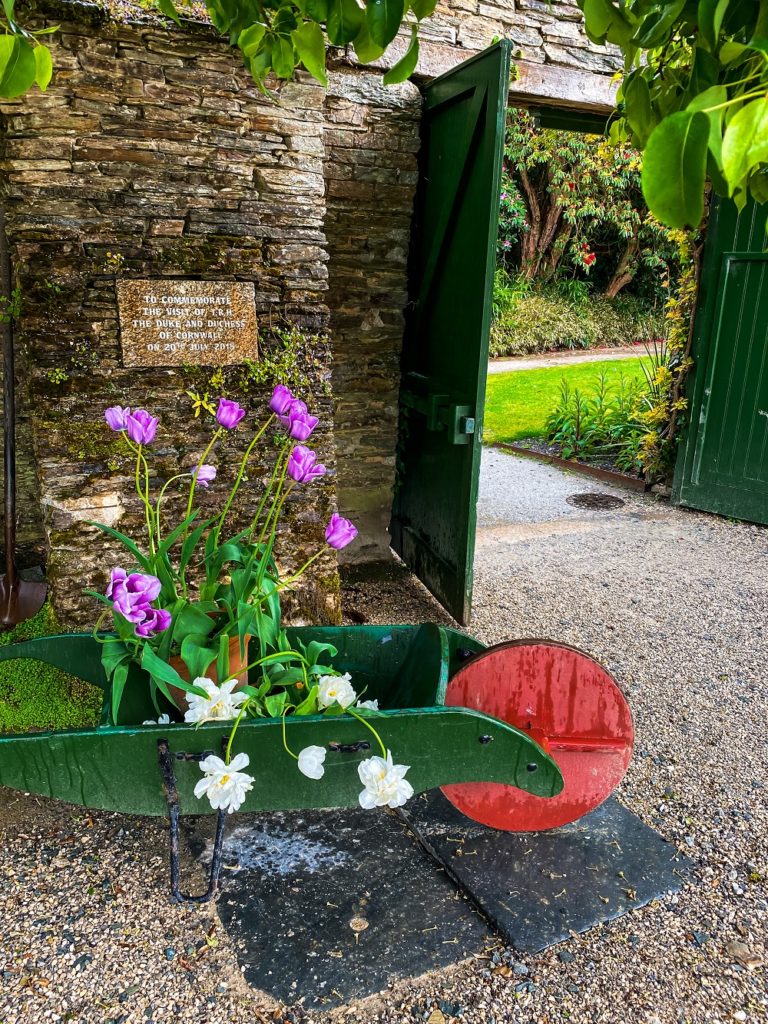
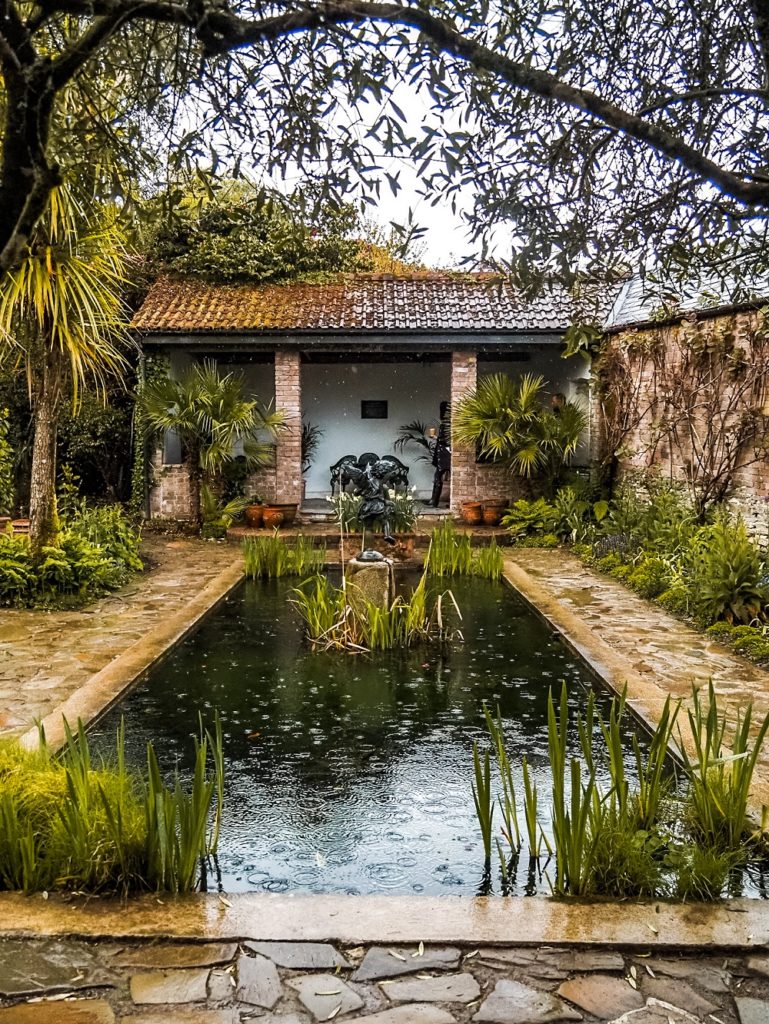
9. Productive Gardens: Melon Yard
Another area you must see is the Melon Yard. It’s located next to the Kitchen Garden.
Here, make sure you check out the Thunderbox Room, which is where the gardener’s names were discovered. The Imperial War Museum has recognised the building as a ‘Living Memorial to the gardeners of Heligan House’.
Another must see feature here is the Pineapple Pit. The original pineapple pit was found in the gardens and then renovated in 1993.
Did you know? – So a pineapple pit is a method that allows you to grow pineapples in colder climates. The method was invented by gardeners in the Victorian area.
The pit uses two different types of South African pineapples: Jamaica Queen and Smooth Cayenne. After renovating the pit in 1993, the first pineapple was grown in 1997. The second one was donated to the Queen.
Fun Fact – Pineapple pits require a lot of manual labor and a massive amount of fresh manure. In addition, it took two years for the pineapple to fruit. When you add up the amount of labour time, maintenance and cost of manure, growing just one pineapple could cost more than £1,000.
10. Pleasure Gardens: Italian Garden
After visiting the Melon Yard, don’t forget to check out the Italian Garden just next to it. This Mediterranean inspired gem is part of the Pleasure Gardens.
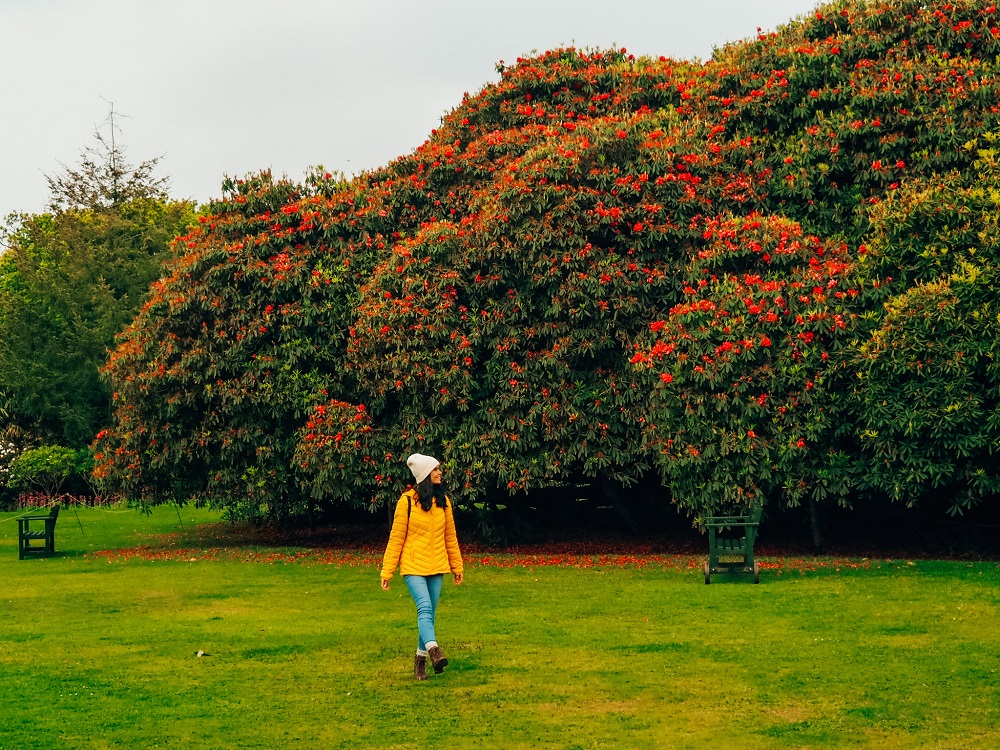
11. Pleasure Gardens: The Ravine and Flora’s Green
After leaving the Italian Garden, you can walk through The Ravine which will lead you to Flora’s Green. This section of the Pleasure Gardens is filled with impressive ancient Rhododendron trees. If you’d like to experience the trees in their full glory, then make sure to visit between April and May. That way you can see the beautiful crimson coloured flowers still on the trees, but can also witness how the fallen petals slowly create a natural carpet around them.

Additional things to do in Cornwall
It doesn’t matter when you visit Cornwall, or what the weather is like, you’ll find no shortage of unique things to do and places to see. We definitely managed to visit a variety of iconic locations during our 3-day trip. So, here are some additional places to add to your Cornish road-trip itinerary.
Visiting Tintagel Castle – Dive into the history and legends of Tintagel Castle including useful tips and 9 must see features so you can make the most of your visit. Click here to read it.
St Nectan’s Glen Circular Walk – Visit Cornwall’s best kept secret, a sacred site with a stunning 60ft tall waterfall via a 1.8 mile short circular woodland walk. Click here to read it.
Lizard Point to Kynance Cove Circular Walk – A 5 mile circular walk along one of the most beautiful sections of coastline in the South West. Click here to read it.
You can also browse for more country houses and gardens in the UK and around the world in my Country Houses and Gardens Series.
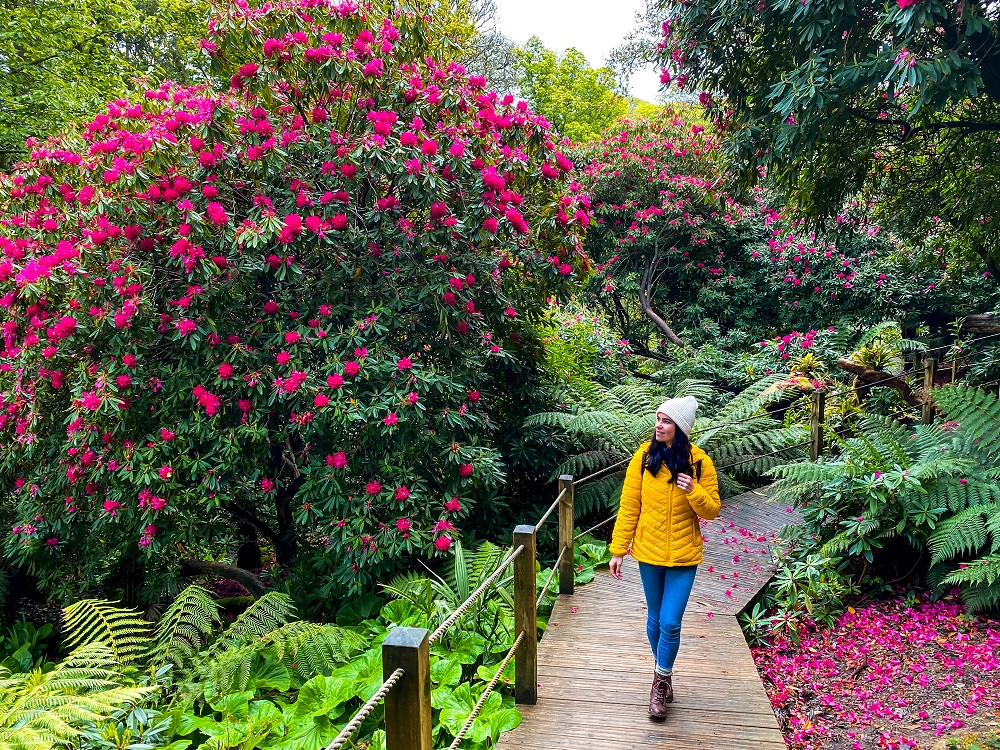
Final Thoughts on The Lost Gardens of Heligan
All in all, I still think the admission fee to The Lost Gardens of Heligan is a bit pricey. However, I totally appreciate that maintaining a garden of this size with all the variety of plants, flowers and rare breed animals requires talented people and also quite a few resources.
After exploring as much of the garden as possible, I still believe that we visited in the perfect season. Even the less popular and attractive areas like the Lost Valley looked like a fairyland in spring. If I lived closer I would probably pay for an annual membership to visit the garden in other seasons, especially during autumn.
Have you ever visited The Lost Gardens of Heligan or Cornwall in general before? If so, how much of the area did you manage to explore? Let me know in the comments below.
Now, let your adventure begin,

Our Top Travel Resources
Accommodation: For hotels we always use Booking.com and Hostelworld for hostels. We also book longer stays on Airbnb or Vrbo.
Flights: To find the best flight prices we always check Skyscanner, Google Flights or WayAway. Then we also check the airlines’ websites too for comparison.
Car Rentals: We use Discover Cars when we want to rent a car as it compares local, national and international companies.
Activities: If we book organised tours we always check either GetYourGuide or Viator.
Foreign Currency: Whenever we can we prefer to pay in local currency and for that we always use our Wise card. We can easily withdraw money from the ATM or pay by card at most shops and restaurants.
Travel Insurance: We never go anywhere without travel insurance. You never know what will happen on your trip, so good travel insurance like SafetyWing can protect you in case of injury, illness, theft and cancellations.
eSIM and VPN: To get data abroad we use Airalo which is an app that allows you to download a prepaid eSIM to your phone in over 190 countries. Make sure to have a VPN to avoid hackers accessing your personal data when using public WIFI. We use Surfshark which is the only VPN that offers one account on unlimited devices.
Remember…It all starts with a Pin…
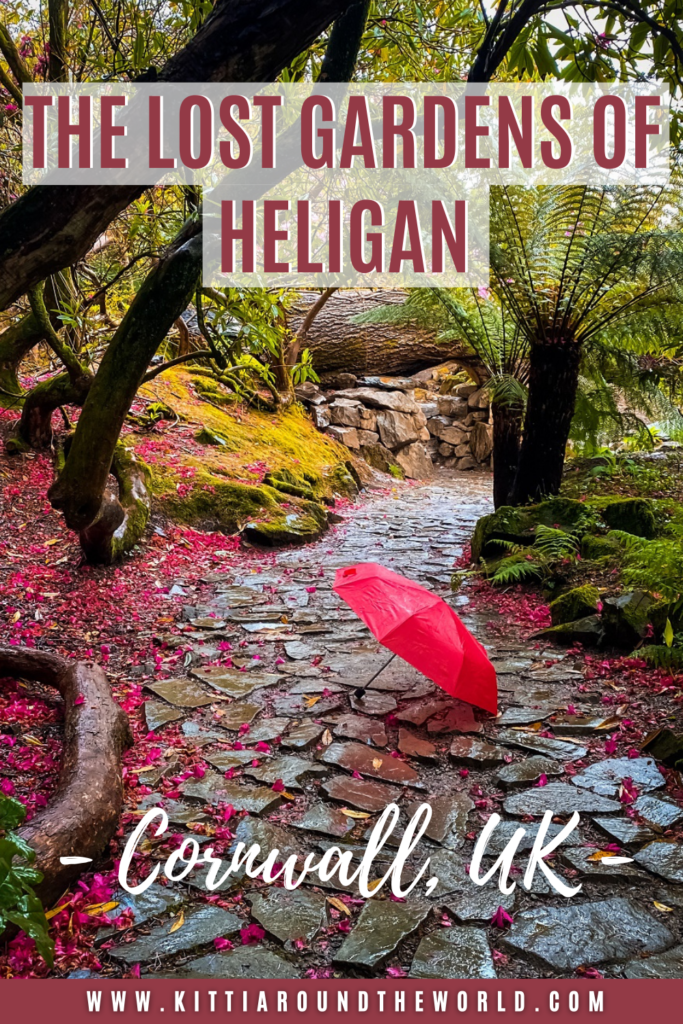
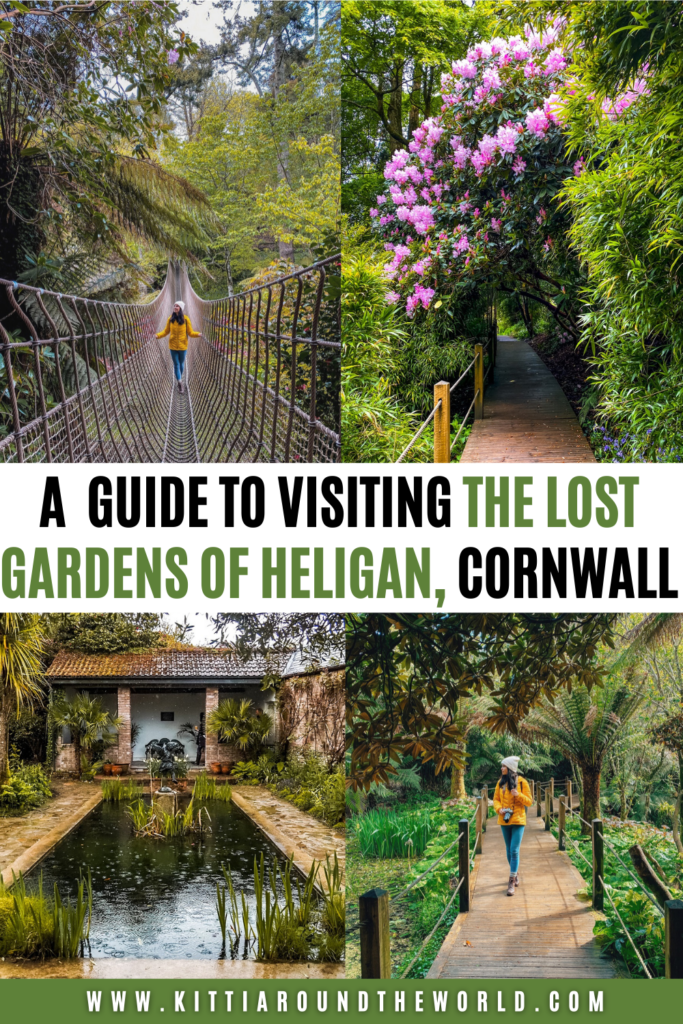


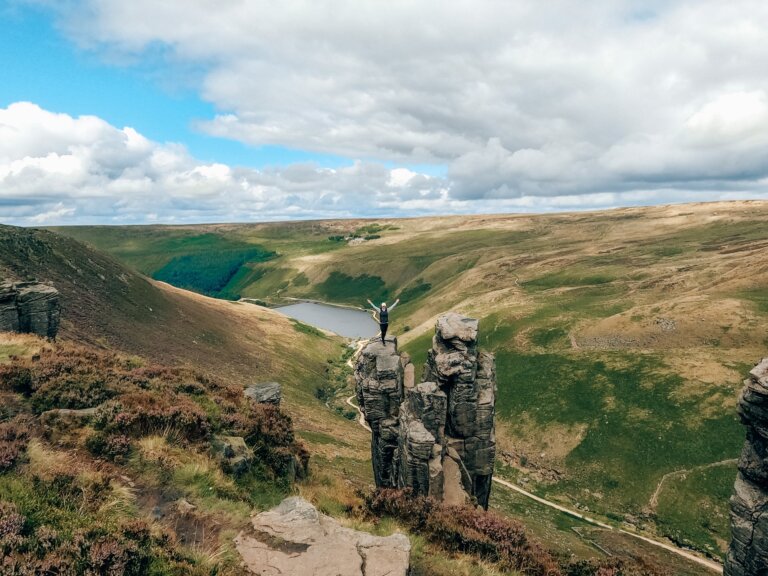
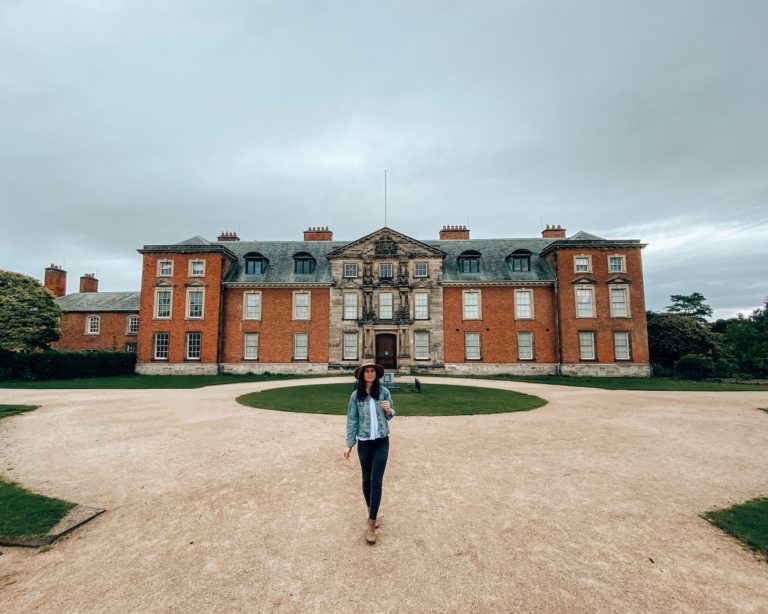
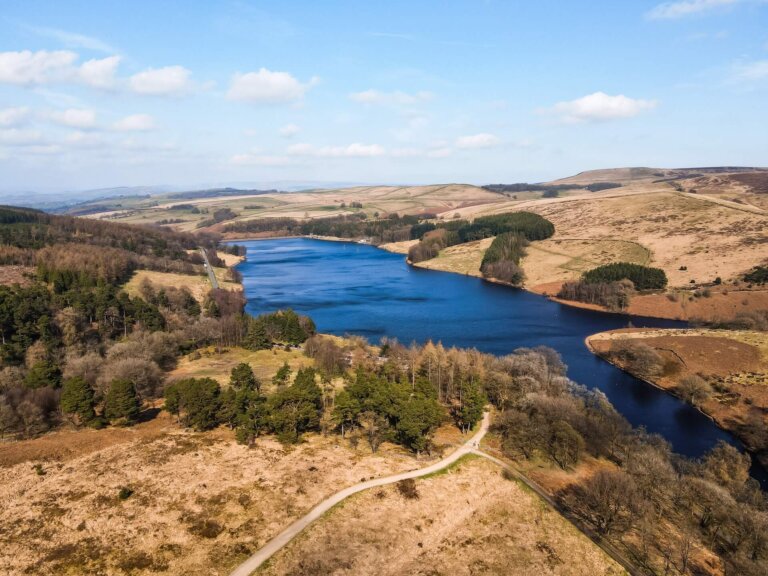
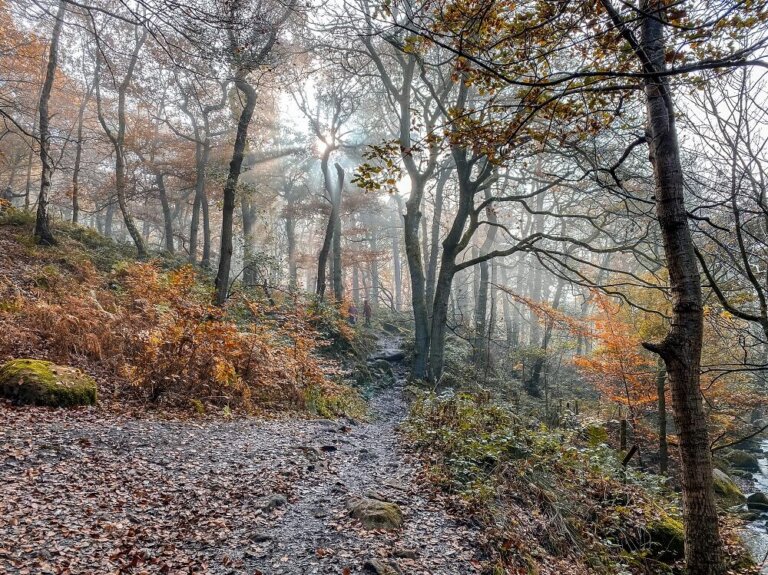
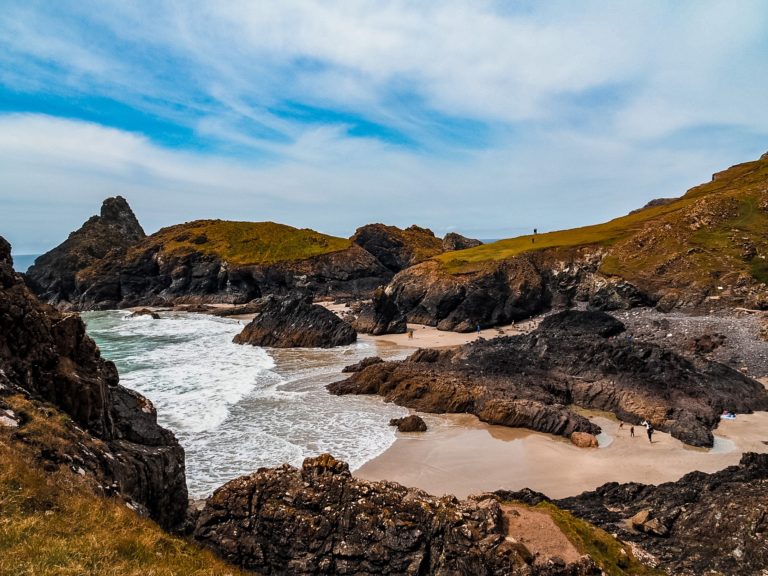
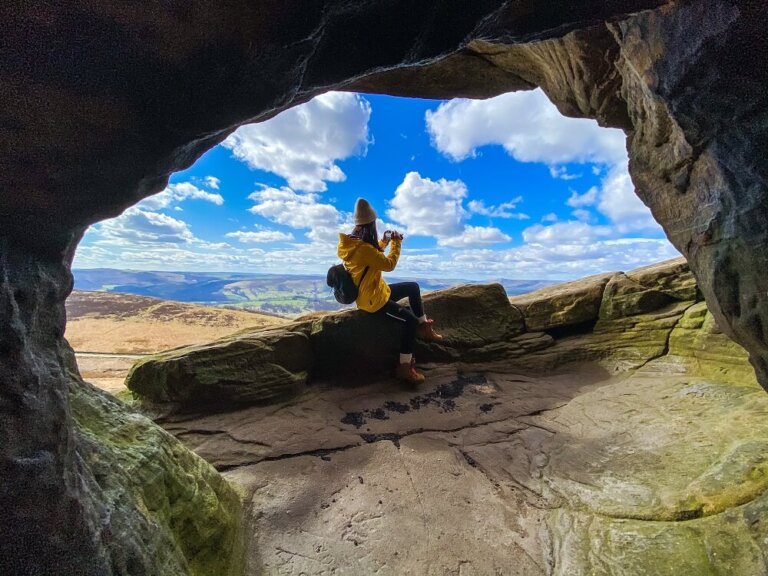
These gardens look incredible! It sounds like you got there at the perfect time in Springs. I love the jungle area, and the natural sculptures!
Thank you Megan, I agree the garden looked its best during May 🙂
Love this guide! I want to visit Cornwall and always love a good photo op. These gardens seem so perfect – even with the high entrance fee
Thank you so much Nina, I’m glad you got some photo inspiration for your next Cornwall trip.
OK. I definitely want to visit. I am a lover of gardens and arboretum. Have annual passes so this would be a must see.
Oh I’m so happy you also want to visit this garden Sandra. I hope you can enjoy exploring it soon 🙂
I had never heard about the Lost Gardens of Heligan even though they are the most visited UK gardens. xx. A great reason to Visit Cornwall. I love all the different flowers and colours on your walk. Great that locals can become a member and visit for free.
Thank you Linda, I hope you can come and visit this beautiful garden soon 🙂
These gardens are absolutely beautiful! You mentioned an entrance fee, but only by looking at your photos do I know it’s worth visiting them. I am adding it to my list of places to visit in the UK. I hope I can visit them next spring. Thank you for sharing.
Thank you Cristina, I’m so glad you’d love to visit Heligan too. I hope you’ll be able to see it in full bloom next spring.
What a beautiful place! I love exploring gardens but I’ve never visited the Lost Gardens of Heligan before. It looks lovely, I’ll be sure to add it to my list! I can’t decide what looks most amazing, the jungle, the rope bridge, the grotto or the walled flower garden! Thanks for the great guide!
Thank you Hannah, I’m glad to hear that you’d want to visit Heligan. Every inch of this garden was beautiful for sure, so I’m sure you’ll enjoy it too when you visit.
Wow- this place is beautiful! Adding to my travel list.
Thank you Shannon, I’m glad my post inspired you for a future trip 🙂
I can’t believe I’ve never heard of these gardens before – what a beautiful area to explore for the day! I can’t wait to get down to Cornwall and see all of its hidden gems like this.
Thank you Krista, I’m sure you’ll enjoy walking around this garden as much as I did 🙂
I am in love with all the floral and faunta. Cornwall looks like a lovely place to visit.
Thank you. This garden is definitely a true gem.
Hi Kitti! What a fun article. I loved all of your photos and details for how to visit the lost gardens of Heligan in Cornwall. The Mud Maid, Giant’s Head, and Burmese Rope Bridge look so neat! Great share.
Thank you so much Ashlee, I’m so glad you enjoyed my post 🙂
How beautiful! I’ve never heard of these gardens but I’d love to get lost in them! It’s incredible how many different gardens are on one property. I’d love to see the Mud Maid, the Jungle and the Kitchen garden. I love the history and how they honored the original gardeners!
Thank you Vanessa, I’m certain that you’ll love visiting this garden as much as I did. I hope you can go very soon.
These are gardens I would surely love to visit. I’m usually carrying my phone and camera too. I love that either take equally great photos.
Thank you so much for the lovely comment. It’s great to hear that you also have both a phone and a camera on you, it’s always great to mix and match the two equipment 🙂
Thanks for highlighting these beautiful gardens! Another place to add to my bucket list when we visit Cornwall. Love the natural sculptures too, and great photos.
Thank you Karan, so glad to hear that you’d like to visit these gardens. I’m certain that you’ll enjoy your visit as much as we did 🙂